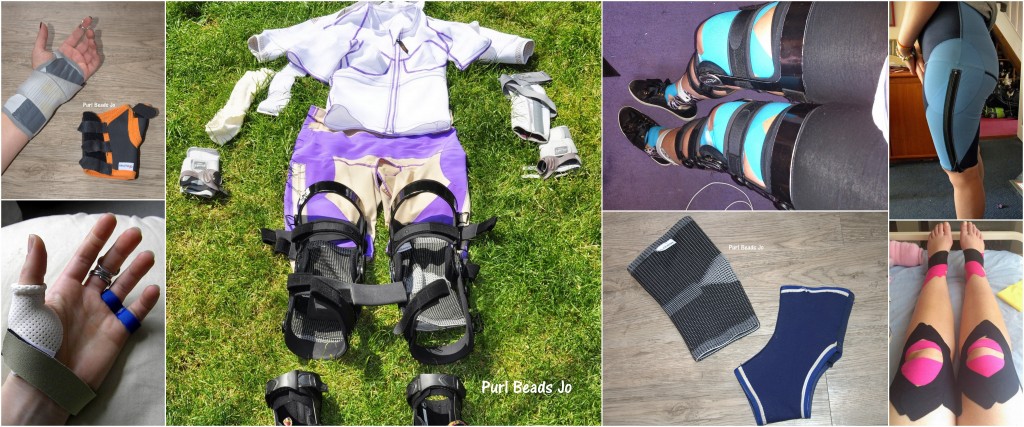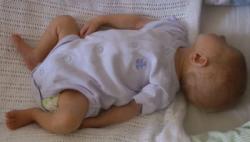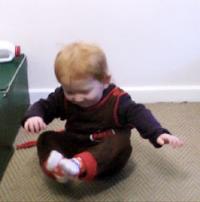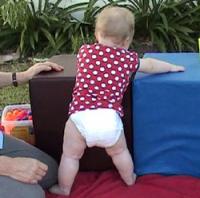hypermobility in babies nhs
If you need advice or have feedback on a community hospital in. Can run in the family Shape of the bones.

Joint Hypermobility Information For Children And Young People Cuh
It affects 7 10 of school age children in the UK.

. In general hypermobility should be considered a connective tissue advantage providing a child is strong and fit. Muscle pain after activity even for 1-2 days afterwards is normal. It is sometimes referred to as being double jointed and is quite common about 1 in 10 people are hypermobile.
Aches and pains are common in children with hypermobile joints. The ligaments that offer stability are more lax and therefore cause increased flexibility. Difficulties mainly occur when the body has become weak and deconditioned.
It covers exercises for strengthening your childs legs arms and core muscles to help support their hypermobile joints. Usually the joints are loose and stretchy because the ligaments that should make them stronger and support them are weak. Faecal and urinary incontinence can also be a feature of the condition.
Hypermobility is a condition in which you have more movement in your joints. The older you are the less likely it is you will be hypermobile. But when hypermobility causes pain it.
Hypermobility refers to an increased range of movement in multiple joints for their age. It is extremely common in children having being reported in 25 to 50 of those younger than 10 years of age. Open Mon-Fri excluding bank holidays 9am-12pm.
Hypermobility is commonly seen in young children. Download the Alder Hey Childrens NHS Foundation Trusts leaflet. A warm bath or heat pack may help relieve pain symptoms.
Advice for hypermobility oxleasnhsuk Children with hypermobile joints have too much movement in their joints. Joint hypermobility is thought to be very common particularly in children and young people. Families should be aware that its main risk comes from preventing children to live normal lives.
It is expected that as muscles become stronger the pain will decrease. Hypermobility literally means more movement. In hypermobility these ligaments are more lax and therefore allow more movement at the joints.
Hypermobility isnt an illness or a disease and as such cant be cured. Hypermobility often improves with age. This can occur with just a couple of joints or all joints.
You can discuss pain relieving medications with your GP as often many may not work efficiently. This is a normal finding and very common in children. A joint is the place on the body where two bones meet.
When you have joint hypermobility it means your joints are more flexible than in other people. Joint hypermobility without pain occurs when children have stretchy or flexible joints but without exercise-related pain. Hypermobility in children Over 5s.
Download the Alder Hey Childrens NHS Foundation Trusts leaflet. Joint hypermobility syndrome can run in families and it cannot be prevented. HSDs are the diagnosis where the main or only symptoms are exercise-related pain together with joint hypermobility.
Try not to focus on pain and distract your child from dwelling on it. Hypermobility exercises for under 5s August 2019 Page 1 of 3 Patient information to be issued by physiotherapists Hypermobility in children Under 5s This leaflet is for children who have hypermobility in their joints. 0300 421 6980 wwwghcnhsuk 0-16 years or 16-18 in full-time education.
In many cases the joints become stiffer with age although joint hypermobility and its associated symptoms can continue into adult life. How common is hypermobility. Hypermobility Information for parents carers and schools PDF 158kb.
This is an advantage to some children and tends to be associated with being good at sport. Children and young people with JHS may have unspecific gastrointestinal symptoms such as nausea stomach ache diarrhoea and constipation. It is common in the general population of children and young adults.
Keeping active and strong is important and helps reduce joint pain as fitness and. This leaflet is intended to be used in conjunction with the APCP symptomatic hypermobility. Other useful information Hypermobility Syndromes Association.
If your child is under the age of 4 they may struggle with this exercise. Most children are flexible but some more so. Joint hypermobility in babies and children is even more common and usually causes no problems.
It is not an illness or disease and is a normal variation. What causes joint hypermobility syndrome. Hypermobility may affect just one joint or many joints.
Using this leaflet. It covers exercises for strengthening your childs legs arms and core muscles to help. With hypermobility ligaments are relaxed and the joints they support are more flexible and move easily beyond the normal range expected for that joint.
Find out more about hypermobility and the conditions which can cause it here. Childrens Physiotherapy Direct Tel. Children should be encouraged to maintain a normal level of activity including playing any sports they are interested in.
Hypermobility exercises for under 5s August 2019 Page 1 of 3 Patient information to be issued by physiotherapists Hypermobility in children Under 5s This leaflet is for children who have hypermobility in their joints. However these symptoms are also very common in children generally and may not be related to their hypermobility. Around 10 of these people live with symptoms which can range from mild to disabling can affect many of the bodys systems not just the joints and vary over time.
Children and young people may suffer aches and pains and these are usually a result of the muscles being used to stabilise the joints and fatigue rather than the result of injury or damage. This leaflet is for children who have hypermobility in their joints. All joints have a cavity containing a small amount of fluid which allows movement to happen.
Hypermobility Information for parents carers and schools PDF 158kb. Hypermobility exercises for over 5s July 2019 Page 1 of 2 Parent information Hypermobility in children Over 5s This leaflet is for children who have hypermobility in their joints. It covers exercises for strengthening your childs legs arms and core muscles to help support their hypermobile joints.
This can occur with just a couple of joints or all joints. Between 25-50 of children under 10 are considered hypermobile. Paediatrics Hypermobility in children Under 5s Hypermobility in children Under 5s September 2021 2 are managing this well they can try standing on a cushion on a carpeted floor or throwing and catching a ball at the same time.
Hypermobility is where joints bend further than average and affects around 30 of the population. Joint hypermobility syndrome in children. Some estimates suggest that around one in every five people in the UK may have hypermobile joints.
Joint hypermobility syndrome can run in families and it cannot be prevented. These are as a result of muscle fatigue.

Types Of Splinting And Bracing For Hypermobility Syndromes Jo Southall Independent Ot

What Is Hypermobility In Babies Children Young Adults Therapy Stars

How Hypermobility And Low Muscle Tone Affect Your Baby S Development Skills For Action

How To Recognise Joint Hypermobility In Your Child My Strong Little Body

What Is Hypermobility In Babies Children Young Adults Therapy Stars

How Hypermobility And Low Muscle Tone Affect Your Infant S Development Low Muscle Tone Pediatric Physical Therapy Activities Muscle Tone

How Hypermobility And Low Muscle Tone Affect Your Baby S Development Skills For Action

Is There A Happy Ending For Children With Hypermobility Double Jointed

How Hypermobility And Low Muscle Tone Affect Your Baby S Development Skills For Action

Is There A Happy Ending For Children With Hypermobility Double Jointed

How Hypermobility And Low Muscle Tone Affect Your Baby S Development Skills For Action

W Sitting Why The Drama Western Kids Health

How Hypermobility And Low Muscle Tone Affect Your Baby S Development Skills For Action

Hypermobility Syndrome Therapies For Kids

How Hypermobility And Low Muscle Tone Affect Your Baby S Development Skills For Action

How Hypermobility And Low Muscle Tone Affect Your Baby S Development Skills For Action
